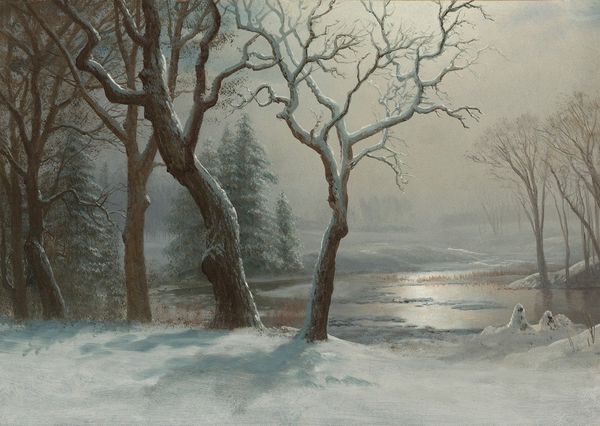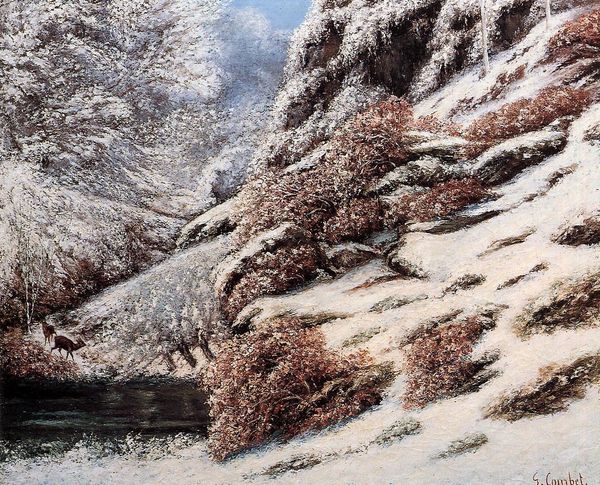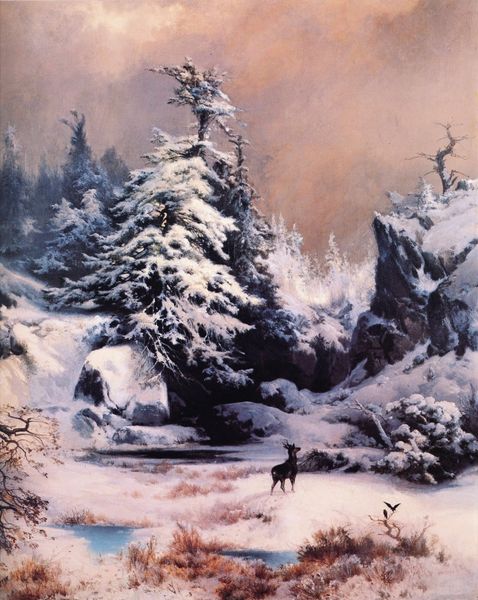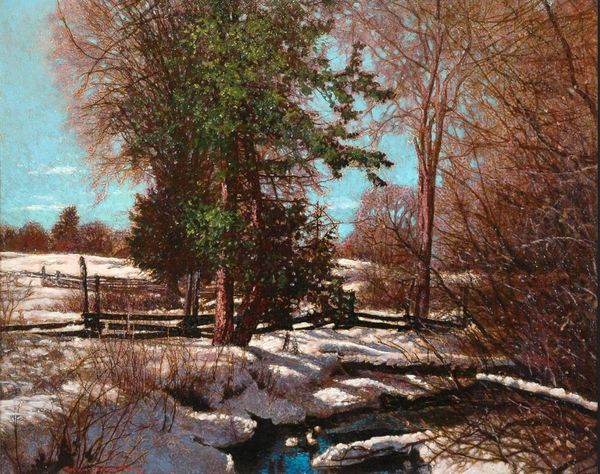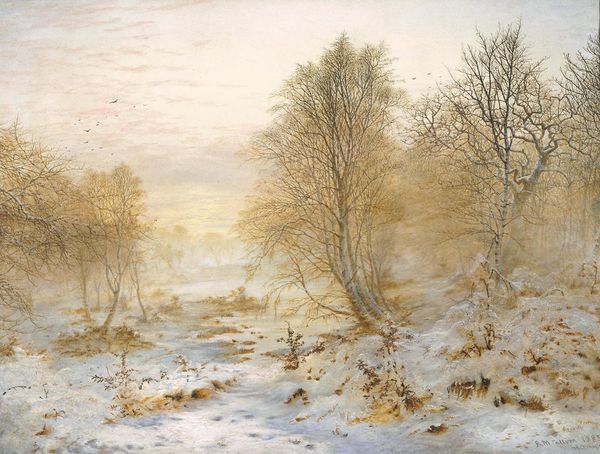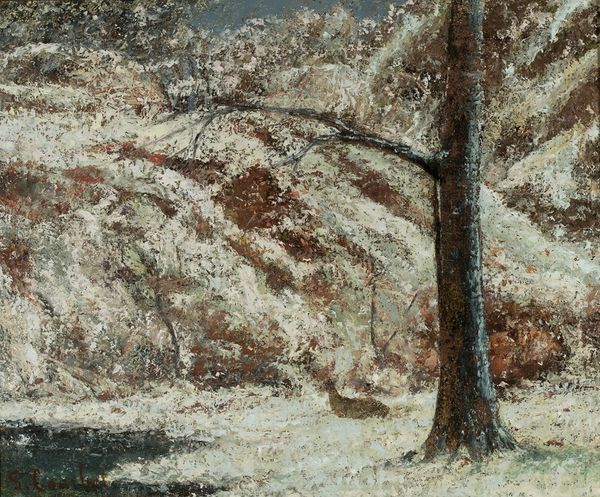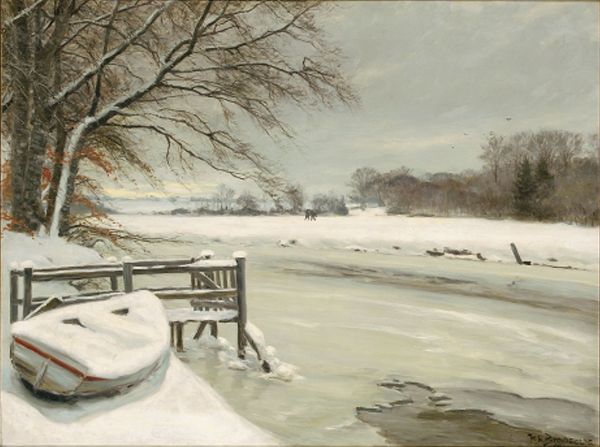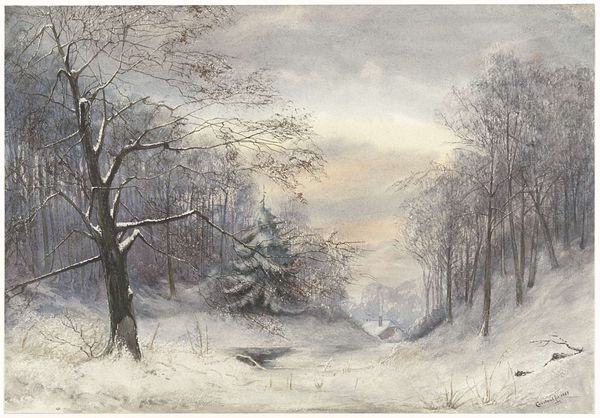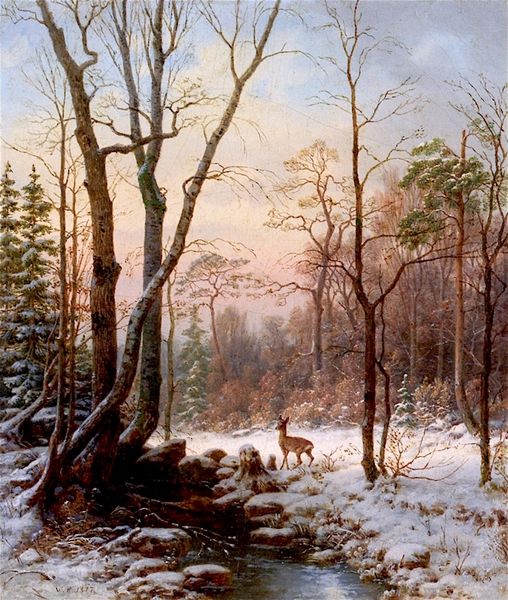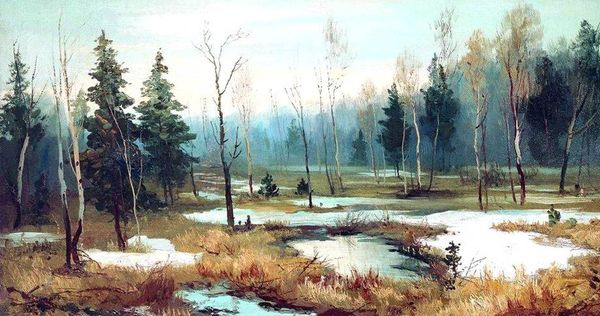
painting, oil-paint
#
painting
#
countryside
#
oil-paint
#
landscape
#
oil painting
#
romanticism
#
realism
Copyright: Public Domain: Artvee
Curator: Let’s turn our attention to this oil painting; we believe it's Gustave Courbet's "La Forêt En Hiver" which translates to "The Forest in Winter". Though undated, it epitomizes his Realist approach. Editor: It immediately evokes a sense of quietude. The heavy snow cover softens the landscape. There’s an undeniable chill that permeates the scene, making it quite solemn and beautiful in its austerity. Curator: Indeed. Courbet’s Realism often sought to depict the unvarnished truth, and here, we see winter in its stark reality. Notice the thick impasto technique; he applies the paint almost sculpturally. That certainly sets him apart from artists with Romantic inclinations. Editor: The symbolic weight of winter is inescapable; death and dormancy, yes, but also a time of reflection and inward focus. Look at those deer near the stream. Are they symbols of vulnerability or perhaps resilience? And doesn't that contrasting red in the foliage pop against the white? It offers a hidden story in its persistence. Curator: Symbolism wasn’t Courbet's primary aim. As a figure in the rise of Socialism, his politics lead him to democratize art. Landscapes became stages to explore human relationships to a broader social structure. The scale makes us conscious of the unyielding force of nature. Editor: So the deer, for example, serve a dual purpose? Perhaps representing wildlife adapting, struggling, mirroring broader human themes during the 19th century and the societal pressures facing everyday folk? Curator: Exactly! It reinforces Courbet's larger commentary on labor, and our connection to the land in an ever changing world. How these values influence public consciousness becomes particularly important in post revolutionary France. Editor: Interesting! After delving deeper, it transforms the whole viewing experience from a simple landscape into this intricate visual text to unravel! I appreciate how the image carries more weight now than my initial reaction. Curator: I hope our brief dialogue provides more understanding around art's reflection and influence upon societal changes, while perhaps giving visitors the proper tools to dissect the visual symbols employed within art of the 19th century.
Comments
No comments
Be the first to comment and join the conversation on the ultimate creative platform.
